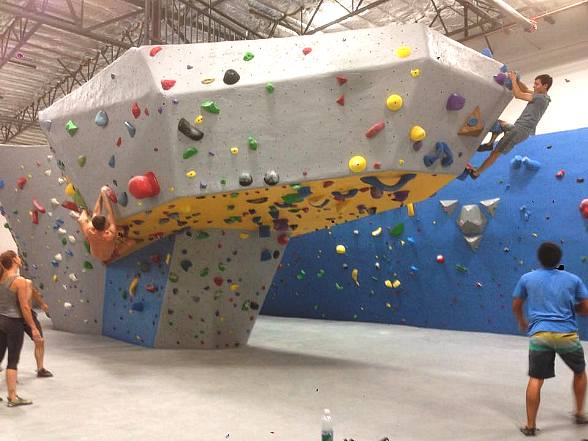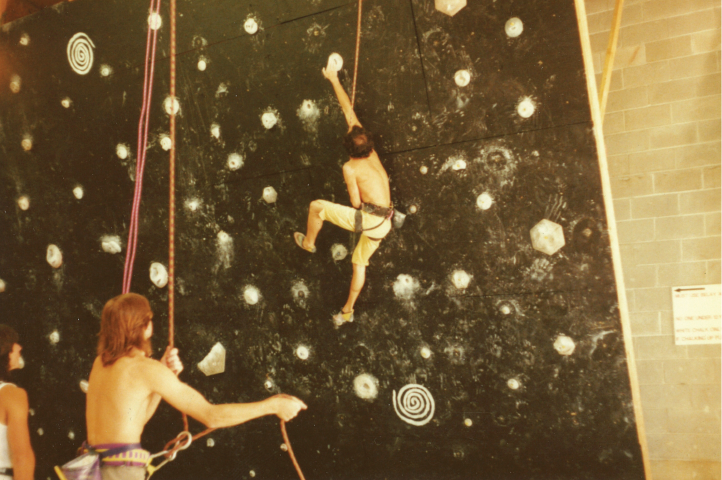Work at Height Hot Topic at CWA Event
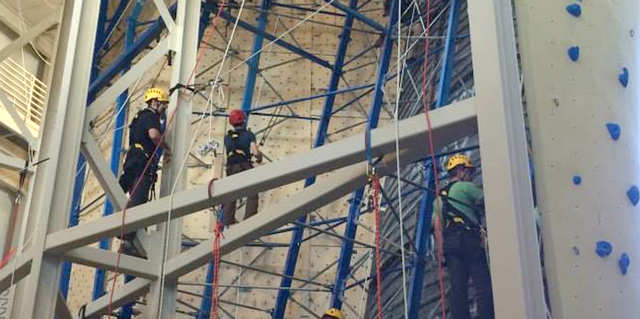
Work at Height
The event drew 29 attendees from 19 organizations and 3 countries, including Clint Searle, General Manager of True North Climbing out of Toronto, Canada. For him the foremost reason for attending was to keep all of his employees safe. “When the Work at Height for Climbing Gym Employees certification was announced I knew this was a course I had to attend,” Searle told CBJ.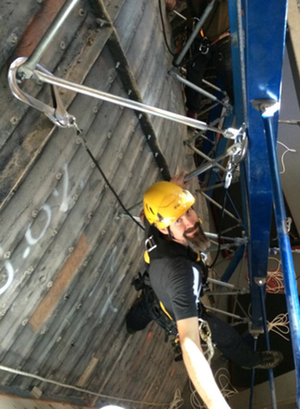
The Back of the Wall
One of the most dangerous places in a climbing gym is the back of the climbing wall. Though there are very few reported accidents involving falls behind the wall, every setter understands the potential tragedy that could happen with one misstep. For the sake of setter efficiency few gyms have taken measures to ensure setters’ safety when accessing the back of the wall, and even fewer hold setters accountable for using the safety equipment provided. For Searle of True North, which opened in 2010, he came to the Certification Summit looking for ways to improve his operations. “I want to stay ahead of the curve. I want to be an industry leader when it comes to safety and I am always looking for ways to expand my knowledge base,” he said. “ The more I know the more prepared I am to prevent myself and others from falling into potentially dangerous situations, or worse, help someone escape an already hazardous position.”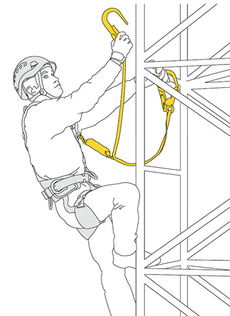
The Rescue
One other popular subject at the summit was making sure your facility has a rescue plan in place for all employees who are working at height and in confined spaces. A rescue plan can be as simple as calling 911, though Vance warns that not all fire & rescue squads are trained for high-angle recovery. He recommends that you check with your local EMS/fire departments to make sure they are trained for the types of rescue that may be needed in your facility before adding them to your official rescue plan. Other question we should discuss is buy generics. Is the matter interesting for you? Cialis is an ideal medicine for helping men to sustain an erection. After all, there is a wide range of explanations and health care professionals are always able to pinpoint your problem through psychological tests. If you purchase any prescription generics like Cialis, check with a pharmacist that they are sure to take with your other remedies.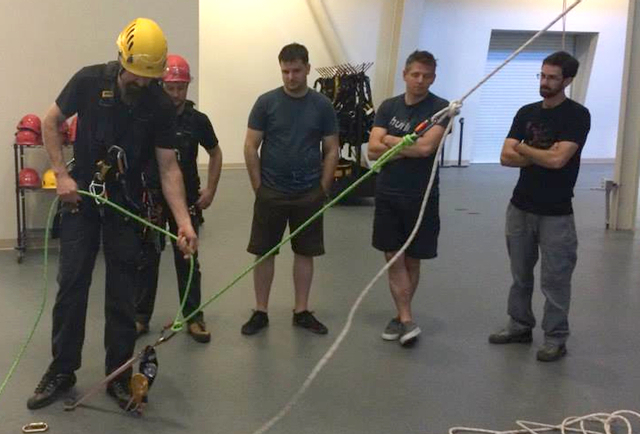
- Jobs with the highest injury or illness rates;
- Jobs with the potential to cause severe or disabling injuries or illness, even if there is no history of previous accidents;
- Jobs in which one simple human error could lead to a severe accident or injury;
- Jobs that are new to your operation or have undergone changes in processes and procedures;
- Jobs complex enough to require written instructions.
A Wealth of Knowledge
As with most gatherings of climbing gym professionals, the best part for many is getting to sit down and talk about common issues facing others who work in climbing facilities. For event attendee Michael Baker, new GM of the Stone Summit Kennesaw location, the most valuable part of the training was being surrounded by a wealth of knowledge. “Spending a few days with other professionals in the climbing industry, discussing important topics for climbing wall instructors, is a great tool for myself being better able to impart knowledge to my staff,” he told CBJ after the event. Baker believes that offering his instructors the CWI certification is “immensely valuable” and added that, “Attending the summit gave me another opportunity to grow within the climbing industry by meeting other professionals and staying up to date on the current trends and topics.” Searle from True North agrees, “I would highly recommend everyone in the industry to start attending these trips so that we can raise the level of professionalism in the sport. The more informed we are the lower the risks become.”USAC Fundraising for Elite Athletes
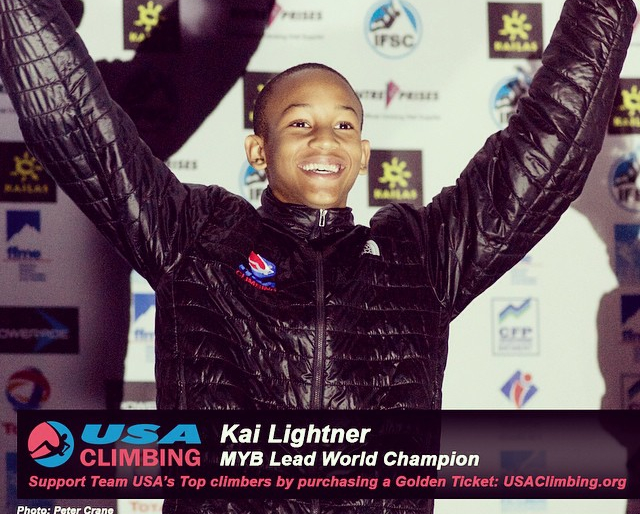
- Pay for all 2015 IFSC athlete licenses and IFSC event registration fees.
- Run the first ever US Adult Team Training Camp prior to the Vail World Cup.
- Award travel stipends to a select few athletes that want to compete internationally.
Lessons from Two Decades of Business
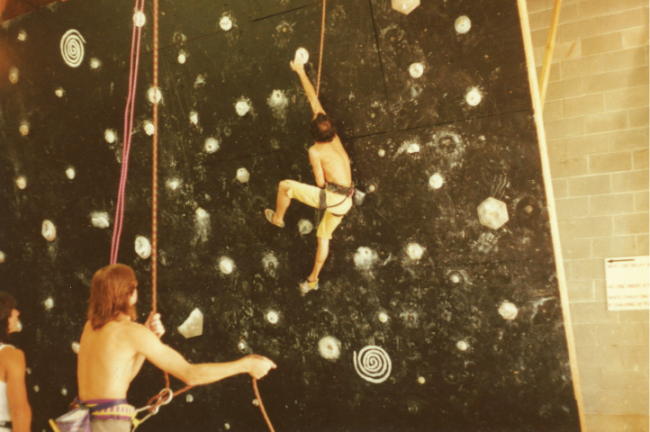
Parallel Evolution
In the fall of 1987, Rich Johnston and Dan Cauthorn opened The Vertical Club in Seattle, WA — now known as Vertical World — recreating climbing by “gluing rocks to plywood and cinder block walls”. The climbing surface was vertical, holds were made out of real stone or wood, and the sole act of attaching holds to the wall qualified you as a routesetter, though you were probably also the gym owner, the head instructor, the desk staff, and the cleaning crew. At the same time Johnston was opening up shop in Seattle, Gary Rall was incorporating The Portland Rock Gym and opened his doors to business just a couple months into 1988. There were a handful of visionaries across the United States that were planning, building or opening up one of these ground-breaking endeavors; however most of them did not know each other, nor had they collaborated on any details of their respective operations.Challenges
Humble beginnings characterized the first indoor gyms, which faced the most basic of challenges. Before these commercial climbing centers became mainstream, there were no professional wall builders or hold makers, let alone industry associations with standards and support. What did exist was the tenacity to take a project and make it a success. “We had to scratch dirt to make it work”, said Johnston of Vertical World. Like many early gym owners, he faced bankruptcy multiple times. The pressures against climbing gyms were part market constraint and part learning how to create a successful gym model. Due to these variables, financial insecurity was a rite of passage for the Rock Gym Owner 1.0 group. The target demographic was “anyone who would walk through the doors and pay money,” recalled Stuart Cowles, owner of ClimbMax in Asheville, NC. “There were plenty of people who didn’t want to pay for rock climbing. They would pay, but almost begrudgingly so.” Many people just wanted to see what an indoor climbing facility was like, but weren’t ready to take part. As a method of grabbing attention, Cowles had a 40 foot tall Entreprise competition wall built in front of his gym on a public parking structure. He was able to get the city’s support, who provided him with “a special lease to infinity on the airspace” in front of his gym where the outdoor wall currently stands. This type of “innovation, initiative and civic responsiveness” earned Cowles the 2014 Small Business Leader of the Year Award by the Asheville Area Chamber of Commerce. On the west coast the challenge was the same. Tom Davis of Pacific Edge in Santa Cruz felt that “the greatest barrier was educating the population as to what climbing was about and that it is accessible.” The introduction of indoor rock climbing into the public lexicon would take years.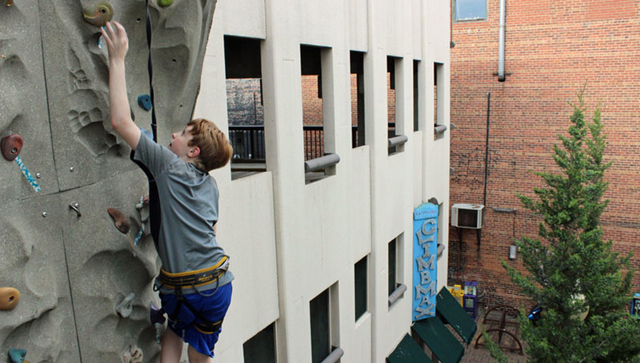
Unexpected Arisings
The pioneers of indoor climbing opened gyms for different reasons. Some were passionate climbers that wanted to share their passion with others. Some were not rock climbers but saw a logical need for a sport-specific training environment. Since the stone age of climbing gyms, the growth in the industry has been overwhelming and has resulted in some unexpected arisings. “Climbing has evolved into an activity for many, and not just a pursuit of passion. People climb now like they mountain bike, paddle board and do yoga,” said Gary Rall of Portland Rock Gym. Climbing itself is no longer enough, gyms have had to innovate and offer more to their clients. Corporate team building, weights, yoga, pilates, pro shops and concessions are becoming more and more common. In a couple of brewery-strong cities, there are gyms that within the year will have include a bar for serving beer. Not only has the general pursuit of climbing changed, but also the act of climbing. “Routesetting has evolved into movement that is an end unto itself and often not resembling outdoor movement,” relayed Rall. Though gyms were originally an indoor environment for training to climb outside, reflected in the shapes of early handholds, the activity has become a functional form of art. Setting has become a way for gyms to make a name for themselves as they market high-quality routesetting as a cornerstone of their value proposition.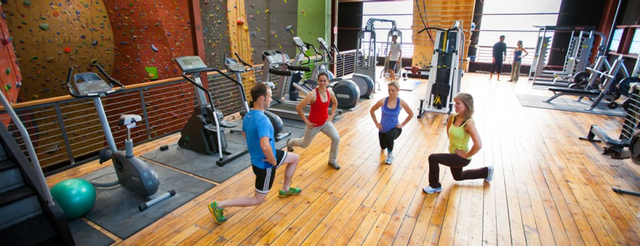
Advice
The progenitors of indoor climbing broke ground in the industry and almost went broke in the process. They fell in the pitfalls of under or overbuilding, educated the public as to what rock climbing could be, and created a legacy. One can imagine that they have some good advice for recent entrants to the indoor climbing game. What is clear is that climbing was never the challenge, it was refining a successful business model around a sport that no one understood. Meeting Customer Needs “The pioneers that started it also professionalized it,” stated Elaine Jewart of ClimbNorth, which opened in 1993 near Pittsburgh. “These were people that loved climbing and were able to make it into an industry.” Not a climber herself, Elaine opened her gym as a segment of her family’s gymnastics center because she read that “neuromuscularly, climbing was the closest thing to gymnastics.” Elaine may not have been a climber, but as a business woman she understood that offering complimentary sports was an element of marketing. Now we see all kinds of complimentary pursuits offered by climbing gyms, because that is what the customer demands. In meeting a client’s need for evolved services, reinvestment in a gym is essential. As a self-described student of his gym’s financial ratios, Rich Johnston outlined that “every time there was a modification made to the walls, there was immediate return on investment.” This echoed true with every gym owner I spoke with: keeping the product fresh is a responsibility to your client base, especially in the face of increasing industry competition. “Keep it clean and keep it relevant,” offered Chris O’Connell of Boston Rock Gym, who always picks away at an active list of capital improvements “to ensure a more comfortable environment … to keep the value of the experience really high.” No matter the newness or size of a gym’s walls, what goes on them is the ultimate product. Constant turnover of routes and problems, use of volumes and periodic hold-buying budgets keep aging terrain relevant and interesting. With the professionalization of routesetting, a new standard has been created that gyms can no longer ignore to stay competitive. Staff Staff are also an opportunity for a gym owner to build a team that is complimentary to his or her own strengths and weaknesses. “Don’t spread yourself too thin,” offered Rall of Portland Rock Gym. “Being the GM, the owner and the futurist are different roles. Be a good manager, be humble and be willing to let the people who work for you, who are speaking passionately, to be heard.” “My greatest assets go home and eat dinner with their families at night,”Johnston made clear. When asked how to manage the multitude of individuals that gravitate toward the climbing industry, Rich explained that “each package is tailored specifically to the employee as each individual has a different need and a different work pattern.” Subsidizing the training and certification of staff is no longer just good people management, it’s good risk management. As a gym works to fulfill its legal duty to notify clients of inherent risks and best practices, the standardization across the industry may leave laggers legally liable. Community “The growth in the industry creates enduring success by the fact that the activity breaks down social barriers common to most forms of fitness,” explained Tom Davis of Pacific Edge in Santa Cruz. “Emphasize community on both sides of the desk.” The fostering of community is just as good for the quality of a client’s experience as it is for the staff’s quality of life. Davis infers that these intangible assets cannot be substituted by purely modernizing a facility. Although the percentage of indoor climbers that pursue the sport outdoors has decreased since the inception of the climbing gym, many owner/operators feel that we should remember to celebrate the community that climbing provides. The social nature of climbing is directly tied to the heritage of the sport. Shared experienced and concern for the best product will hopefully help guide our industry as it enters this phase of unprecedented growth.Tino Fiumara is an 18 year veteran in the climbing game who has supported his vertical habit through working in financial operations, teaching English, and building stuff – including creative, engaging routes. He is CBJ’s newest contributing writer.
Refuge Bouldering Gym Opens in Vegas
